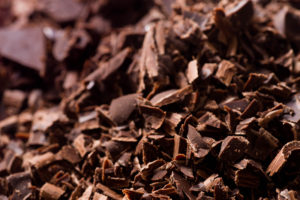
closeup to dark chocolate chunks
Chocolate, often a delicious indulgence, is more than just a treat for your taste buds. Did you know that cocoa, the primary ingredient in chocolate, can work wonders for your skin? Packed with antioxidants, minerals, and other skin-loving nutrients, chocolate can help enhance your complexion and promote a healthy, glowing look. Let’s dive into the benefits of chocolate for your skin and how you can incorporate it into your skincare routine.
1. Rich in Antioxidants: Protect Your Skin from Damage
One of the key reasons chocolate is great for your skin is its high antioxidant content, particularly flavonoids. Antioxidants help protect the skin from free radicals—unstable molecules that can cause oxidative stress and damage to your skin cells. Free radicals are one of the leading causes of premature aging, including wrinkles, fine lines, and dullness.
Cocoa, especially dark chocolate, is rich in antioxidants like flavonoids, which can help neutralize free radicals and reduce their harmful effects. This makes chocolate a powerful ally in protecting your skin from environmental stressors such as UV radiation and pollution.
2. Moisturizes and Hydrates
Cocoa butter, a natural fat derived from cocoa beans, is a common ingredient in moisturizers and skincare products. Its rich emollient properties help lock in moisture, keeping your skin soft, smooth, and hydrated. Cocoa butter is known to improve the skin’s elasticity, making it an excellent choice for preventing dryness and keeping your skin moisturized.
By applying products that contain cocoa butter, or even using dark chocolate masks or treatments, you can help restore moisture balance to your skin, especially during colder months when the skin tends to lose moisture.
3. Improves Blood Flow and Skin Health
Another benefit of chocolate is its ability to improve blood flow to the skin. The flavonoids found in cocoa can enhance circulation, delivering more oxygen and nutrients to the skin cells. This improved blood flow can help your skin look healthier and more radiant. In addition, better circulation can aid in the removal of toxins, further contributing to clearer, more youthful-looking skin.
4. Fights Acne and Reduces Inflammation
Inflammation is often a major culprit behind skin problems such as acne, redness, and irritation. The anti-inflammatory properties of cocoa can help reduce this inflammation, leading to calmer and clearer skin. Moreover, chocolate contains zinc, a mineral known for its acne-fighting properties. Zinc helps regulate oil production and has been shown to promote faster healing of acne lesions.
By incorporating cocoa-infused products or enjoying dark chocolate (in moderation), you may notice a reduction in breakouts and irritation over time.
5. Protects Against UV Damage
While chocolate is not a substitute for sunscreen, research has shown that the flavonoids in cocoa can help protect the skin from the harmful effects of UV rays. Studies suggest that cocoa may help reduce the risk of sunburn, as the antioxidants in cocoa can help absorb UV radiation and prevent damage to the skin’s cells.
Consuming dark chocolate or using products with cocoa extracts can provide an extra layer of protection against UV damage, but always remember to use sunscreen for full protection.
6. Promotes a Healthy Glow
When consumed in moderation, dark chocolate can also help promote a healthy, glowing complexion. The combination of antioxidants, minerals, and moisture-retaining compounds can work together to give your skin a youthful and radiant appearance. The flavonoids in chocolate can also enhance your skin’s ability to repair and regenerate, which can lead to improved skin tone and texture over time.
7. DIY Chocolate Skincare Treatments
If you want to take advantage of chocolate’s skin benefits, consider trying some DIY chocolate face masks. Here’s a simple recipe you can make at home:
Chocolate and Honey Face Mask:
- 1 tablespoon dark cocoa powder
- 1 tablespoon honey
- 1 tablespoon plain yogurt
Mix the ingredients together to form a smooth paste. Apply the mask to your face and leave it on for 10-15 minutes. Rinse off with warm water, and enjoy soft, glowing skin!
This mask combines the skin-soothing properties of honey with the antioxidant-rich cocoa, providing a nourishing and hydrating treatment.
Conclusion
Chocolate isn’t just for indulging your sweet tooth—it’s also a powerful ingredient for skin health. Whether you consume it in small amounts or use chocolate-based skincare products, the antioxidants, hydration, and anti-inflammatory properties of cocoa can help improve the overall appearance and health of your skin. So, go ahead and treat yourself to some dark chocolate—it’s good for both your skin and your soul!
Always remember, though, moderation is key, as excessive consumption of chocolate can contribute to other skin issues, such as breakouts. Enjoy the sweet benefits of chocolate in a balanced way, and your skin will thank you.
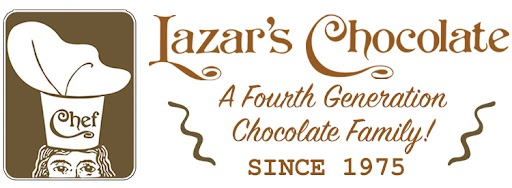

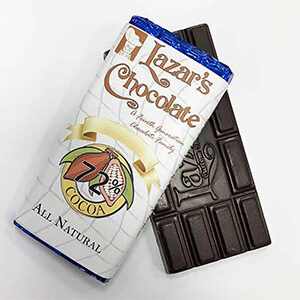
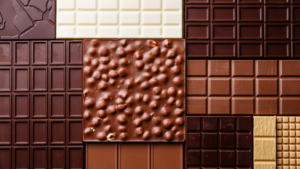 To store chocolate for maximum freshness, you need to protect it from heat, humidity, light, and strong odors. Here’s a detailed guide:
To store chocolate for maximum freshness, you need to protect it from heat, humidity, light, and strong odors. Here’s a detailed guide: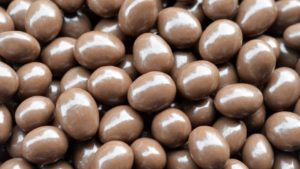 Yes, chocolate, especially dark chocolate, can be good for your skin due to its rich content of antioxidants, flavonoids, and other nutrients. Here’s a breakdown of how it benefits the skin:
Yes, chocolate, especially dark chocolate, can be good for your skin due to its rich content of antioxidants, flavonoids, and other nutrients. Here’s a breakdown of how it benefits the skin: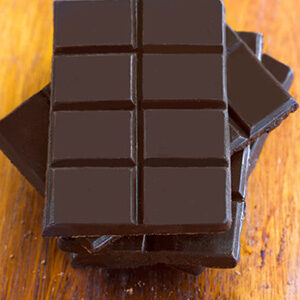
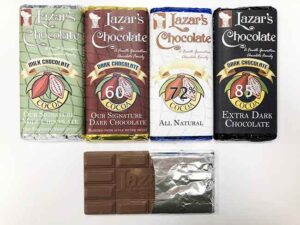 When it comes to premium chocolates, Lazar’s Chocolate has set a gold standard in craftsmanship and taste. With a family legacy spanning over seven decades, their dedication to quality is evident in every piece of chocolate they produce. Here’s what makes their confections a cut above the rest:
When it comes to premium chocolates, Lazar’s Chocolate has set a gold standard in craftsmanship and taste. With a family legacy spanning over seven decades, their dedication to quality is evident in every piece of chocolate they produce. Here’s what makes their confections a cut above the rest: For over 70 years, Lazar’s Chocolate has been synonymous with handcrafted excellence, offering a delightful array of gourmet chocolates and candies. Rooted in Swiss-style recipes brought to America by founder Grandpa David Lazar, the brand continues to thrive under the guidance of the Lazar family, delivering top-tier quality and exceptional taste.
For over 70 years, Lazar’s Chocolate has been synonymous with handcrafted excellence, offering a delightful array of gourmet chocolates and candies. Rooted in Swiss-style recipes brought to America by founder Grandpa David Lazar, the brand continues to thrive under the guidance of the Lazar family, delivering top-tier quality and exceptional taste.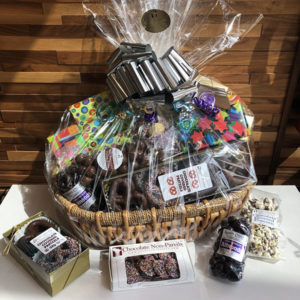
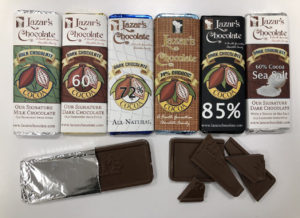 Chocolate has long been a favorite indulgence, but did you know it can also give your mood a boost? This delicious treat, especially dark chocolate, is more than just a sweet snack. It contains compounds that can positively impact your mental health and well-being. In this article, we’ll explore how chocolate can elevate your mood and why it’s more than just a guilty pleasure.
Chocolate has long been a favorite indulgence, but did you know it can also give your mood a boost? This delicious treat, especially dark chocolate, is more than just a sweet snack. It contains compounds that can positively impact your mental health and well-being. In this article, we’ll explore how chocolate can elevate your mood and why it’s more than just a guilty pleasure.
Recent Comments